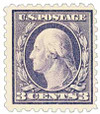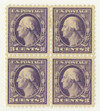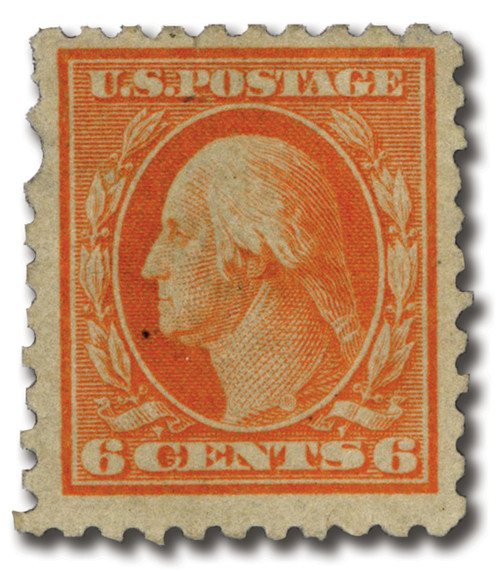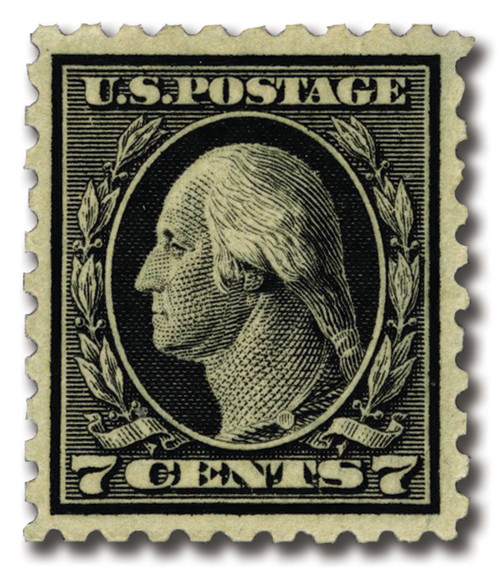
1916-17 3c Washington, violet
# 464 - 1916-17 3c Washington, violet
$22.00 - $950.00
U.S. #464
1916-17 3¢ Washington
1916-17 3¢ Washington
Series of 1916-17
Issue Date: November 11, 1916
Printed by: Bureau of Engraving and Printing
Printing Method: Flat plate
Watermark: None
Perforation: 10
Color: Violet
Printing Method: Flat plate
Watermark: None
Perforation: 10
Color: Violet
Stamp experts Beverly King and Max Johl wrote this variety of 3¢ Washington was “almost entirely overlooked during the short time it was current.” Collectors were busy examining perforations and weren’t aware this stamp was issued on unwatermarked paper. Few of them were placed in collections.
First Unwatermarked U.S. Stamps
In 1916, the Bureau of Engraving and Printing began producing stamps on unwatermarked paper. With the United States already close to a wartime economy as World War I raged in Europe, the lower cost of paper without a watermark added up to big savings for the Bureau. However, watermarks on previous stamps were often quite hard to identify, and collectors were slow to recognize that a new type of paper was being used.
Adding to the confusion was the continued use of 10 gauge perforations. A year earlier, 11 gauge perforations had been introduced, and the collecting community expected to see new stamps with that gauge. But in another cost-cutting move, the BEP continued to use the 10 gauge perforating rollers until they wore out completely. The Series of 1916 Washington-Franklins used the same design as previous stamps.
U.S. #464
1916-17 3¢ Washington
1916-17 3¢ Washington
Series of 1916-17
Issue Date: November 11, 1916
Printed by: Bureau of Engraving and Printing
Printing Method: Flat plate
Watermark: None
Perforation: 10
Color: Violet
Printing Method: Flat plate
Watermark: None
Perforation: 10
Color: Violet
Stamp experts Beverly King and Max Johl wrote this variety of 3¢ Washington was “almost entirely overlooked during the short time it was current.” Collectors were busy examining perforations and weren’t aware this stamp was issued on unwatermarked paper. Few of them were placed in collections.
First Unwatermarked U.S. Stamps
In 1916, the Bureau of Engraving and Printing began producing stamps on unwatermarked paper. With the United States already close to a wartime economy as World War I raged in Europe, the lower cost of paper without a watermark added up to big savings for the Bureau. However, watermarks on previous stamps were often quite hard to identify, and collectors were slow to recognize that a new type of paper was being used.
Adding to the confusion was the continued use of 10 gauge perforations. A year earlier, 11 gauge perforations had been introduced, and the collecting community expected to see new stamps with that gauge. But in another cost-cutting move, the BEP continued to use the 10 gauge perforating rollers until they wore out completely. The Series of 1916 Washington-Franklins used the same design as previous stamps.























